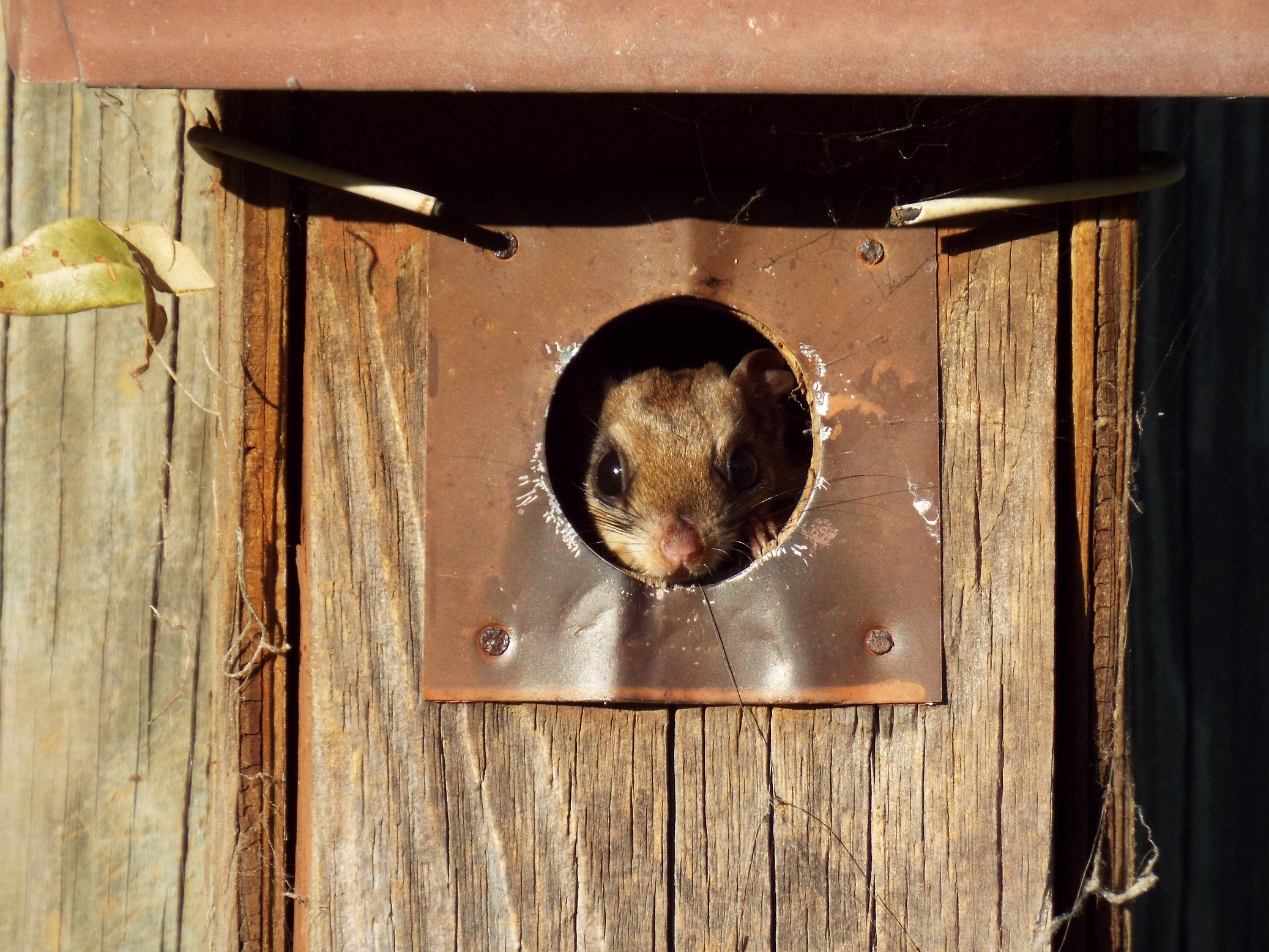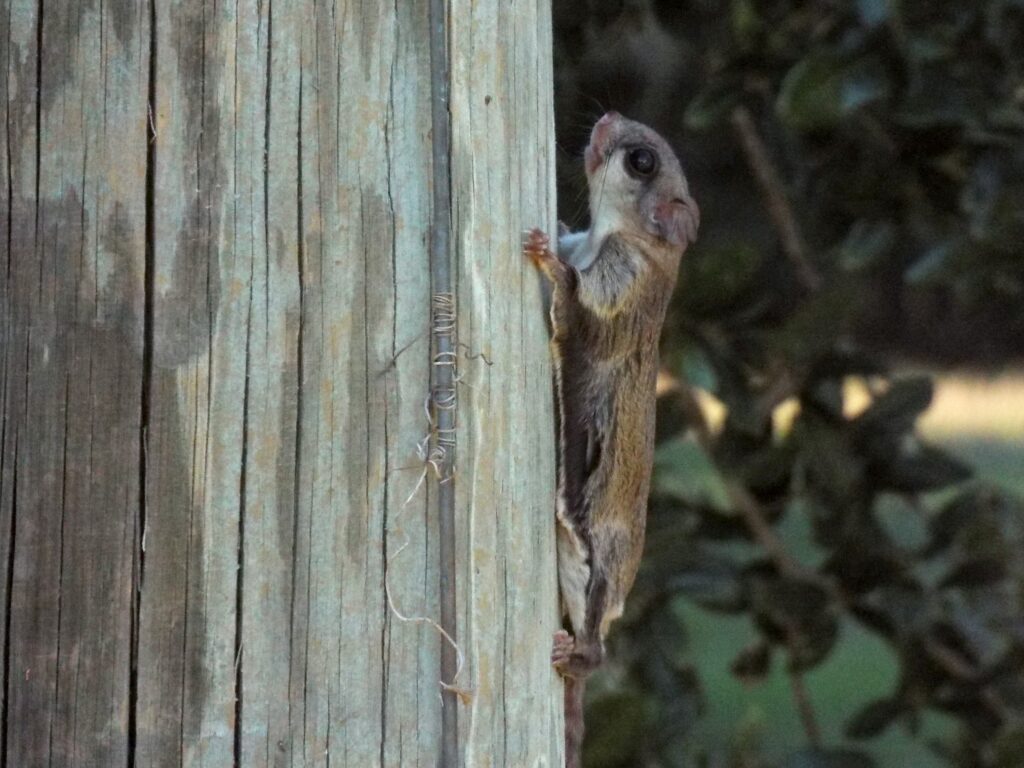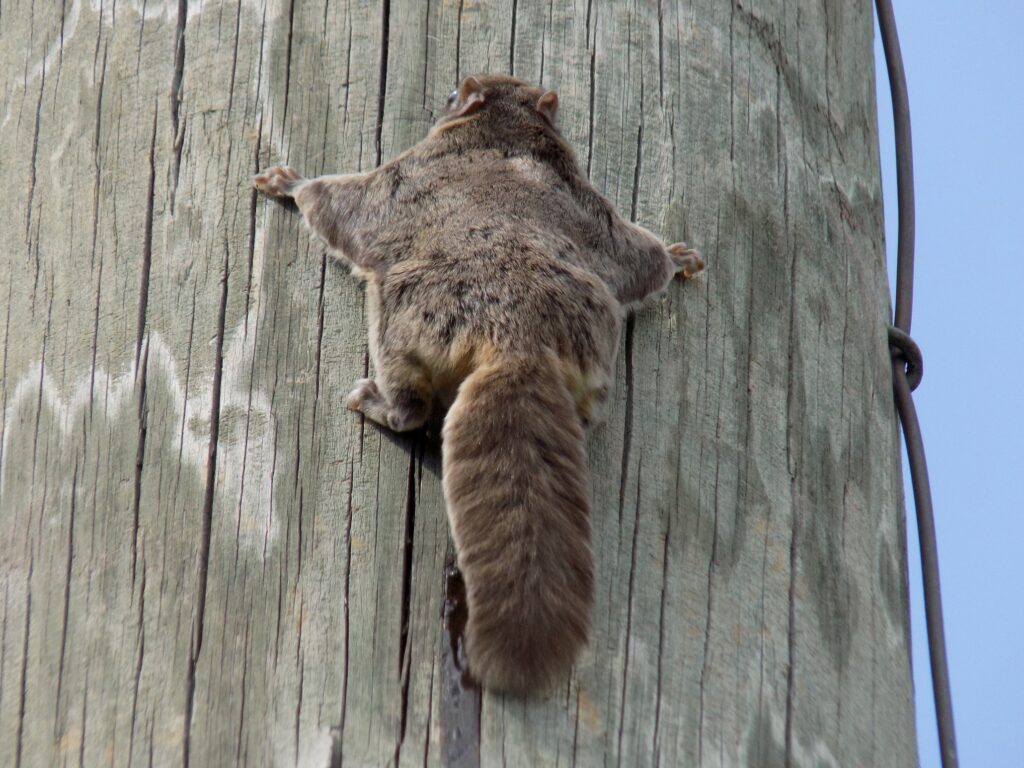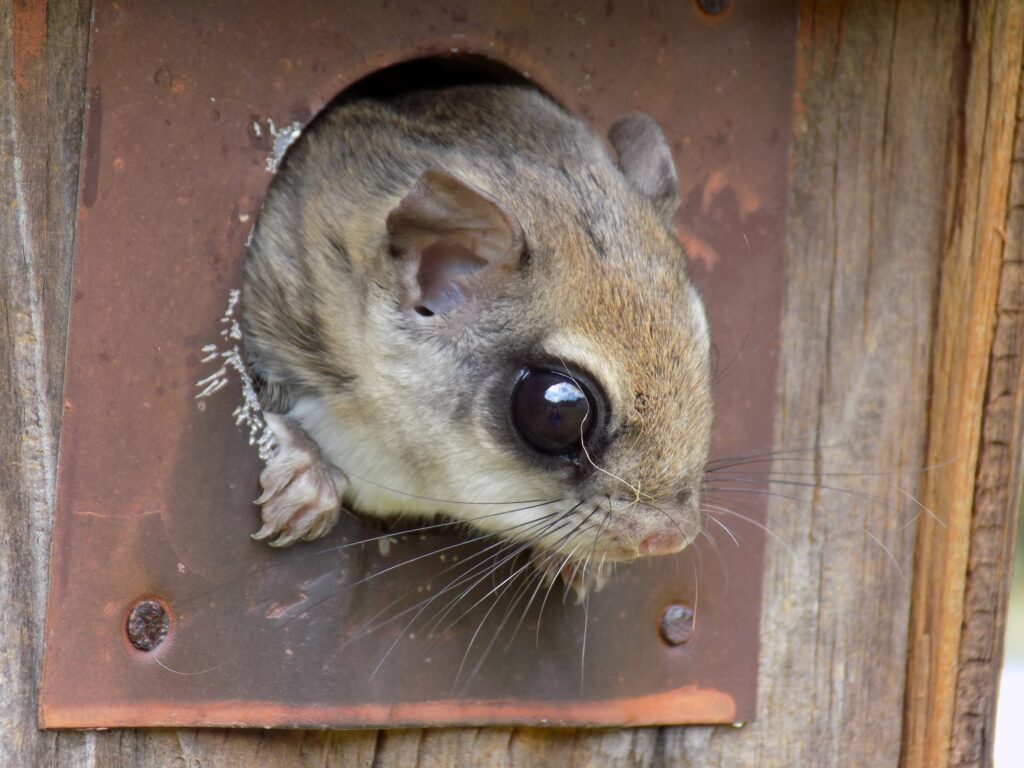



This week for Flora and Fauna Friday, we’re discussing a unique little nocturnal rodent native to the eastern US. We’re talking about the Southern Flying Squirrel (Glaucomys volans).
Southern Flying Squirrels are fairly small, reaching about 9 inches in length. Making them about the same size as a Cotton Rat. They have large bug eyes, a flat fluffy tail, and, of course, those flaps of skin between its legs that let it glide. Flying Squirrels can’t fly, like how a bat does, but they can glide rather well. They use their body as a parachute and their tail as a rudder. Flying Squirrels live in similar habitats to the regular old Gray Squirrel and have similar diets and life histories. Flying Squirrels inhabit hardwood or mixed forests. Being smaller, they are more omnivorous than Gray Squirrels. Their size limits their ability to access the more difficult nuts to crack. They eat nuts, berries, acorns, insects, and will even raid bird nests. They are cavity nesters and use old Woodpecker cavities for their nests. The one in the photos below has taken to nesting in one of my Bluebird boxes.
Flying Squirrels are nocturnal and their big eyes allow them to navigate the treetops at night. Flying Squirrels, like most mammals, have a structure called the tapetum lucidum. This is a specialized reflective structure in the eye that allows for improved night vision. This is the same thing that gives your cat or dog glowing green eyes at night. Flying squirrels have reddish-orange eyeshine. Humans lack this structure, so our eyes don’t reflect light at night. This structure is basically a mirror behind the retina within the eye. The retina is not perfectly efficient at sensing light and some will pass through undetected, only to be absorbed by the back of the eye. What the tapetum lucidum does is reflect this lost light back through the retina. This gives the animal’s retina a second opportunity to sense that light. Any light that is not “seen” this second time comes back out through the cornea. This reflected light is what we see as eyeshine.
The scientific name, Glaucomys volans, like other species we’ve discussed, tells us a little bit about the species. The specific epithet “volans” is Latin for flying. Pretty straight forward. The genus “Glaucomys” is a compound word with glauco meaning blue-gray or silvery and mys meaning mouse. Also straight forward. So, this species is simply named “flying gray mouse”. Flying Squirrels are very common in the hardwood forests of our area. However, due to those big eyes, they are entirely nocturnal. This makes them hard to and many people have never seen one. Luckily, this time of year is the best time to find one. Flying squirrels are rather vocal in the winter as they are gearing up for their winter breeding season. I hear them in the woods every week. They emerge once the sun has fully set and will begin call to each other, especially if they think you’re trespassing under their trees. They make a repetitive series of very high-pitched squeaks and when these squeaks come from 20ft up a tree, there’s no mistaking who’s making them.